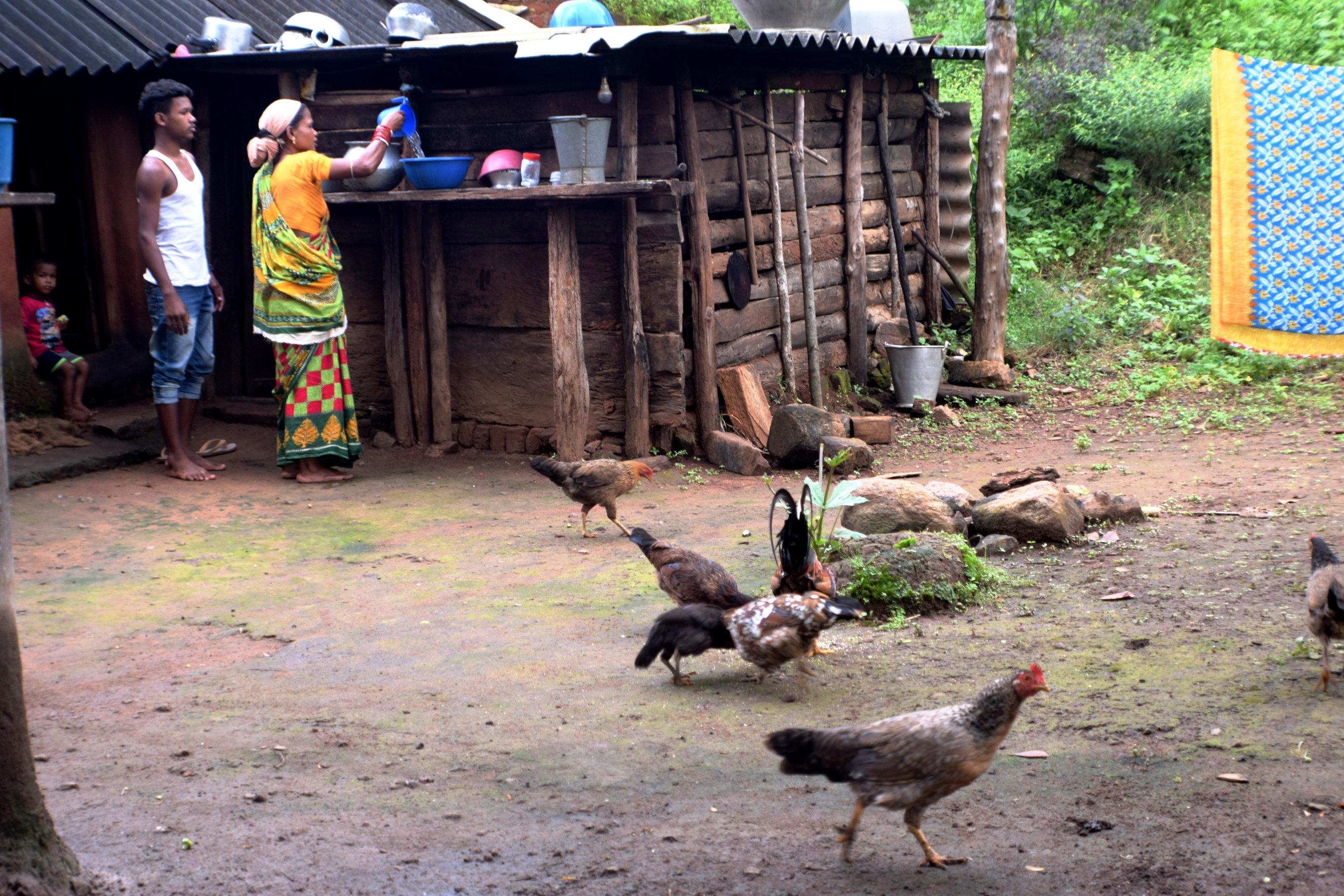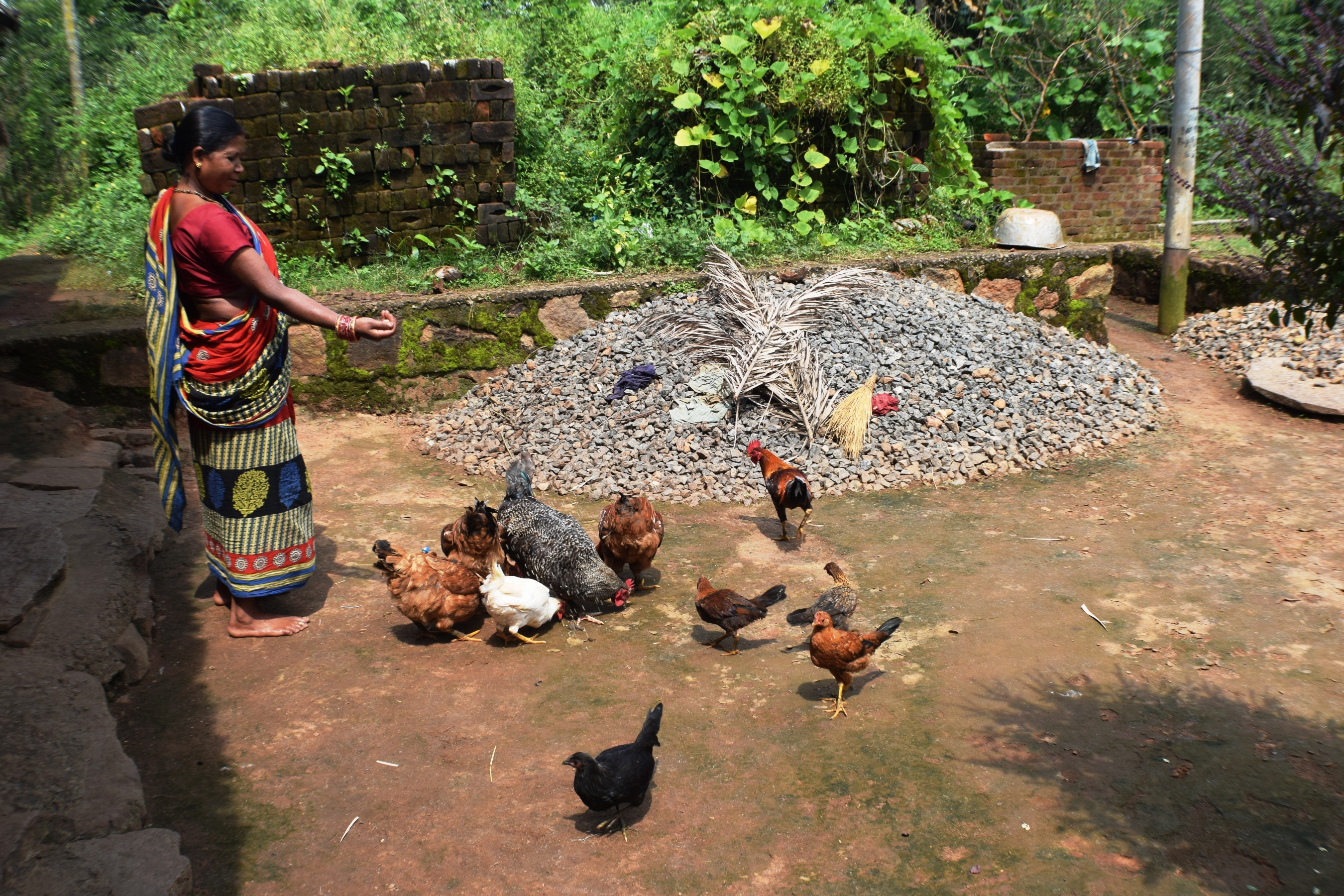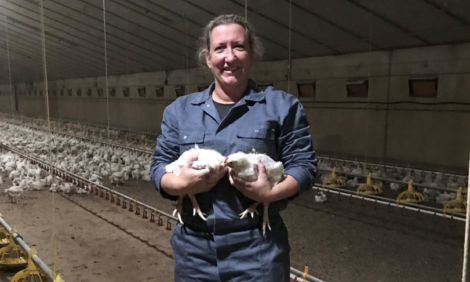



Poultry taboo is one more social barrier for women and girls in parts of India
In India, tribal communities have been involved in rearing backyard poultry since time immemorial – long before the government and development agencies counted it as a form of livelihood and a key component of food-security policy. It’s a ubiquitous activity among tribal families living in India’s rural and forested areas, who will typically be rearing a dozen or so of chickens in their backyards. The birds will usually be a native breed, and, while most of them are for family consumption and festive occasions, households will also sell a few of them to outsiders. Chicken is part of many cultural events and rituals among tribal communities.
As is the case in so many other parts of the country, this is the practice in the Kondh tribal community of Odisha – concentrated mostly in the district of Kandhamal and partly in Kalahandi and Rayagada districts. Consumption of chicken meat and eggs in the Kondh community, however, is influenced by taboos and stigma.

© Basudev Mahapatra
No chicken for women and girls
Chandrika Kanhar, 30, of Kandhamal’s Dadadimaha village rears about a dozen birds – both hens and cockerels – in her backyard, to fulfil the consumption and cultural needs of her family. But the social norms of her community don’t allow her to consume either chicken meat or egg.
Often female villagers in Kandhamal and other parts of the region are rearing small numbers of chicken to feed their families and fulfil their cultural needs, but they are prohibited from eating the birds themselves. Their communities’ customs don’t allow some women to eat either chicken meat or eggs.
“It’s a taboo! Post puberty girls and women of reproductive age, below 50, don’t consume chicken meat and eggs. In fact, they are barred by community norms,” says Nrupati Majhi, 45, of Kanakpur village in Kalahandi district. “We do not know why such restriction is there.”
According to Diksha, a behaviour-change communication specialist with the Odisha chapter of Care India, the reasons for such gender-based poultry proscriptions have often been forgotten and are “unknown to anyone in the community. It very much looks unscientific and discriminatory,” she says. As part of a project promoting nutrition-focused agriculture with a food-systems approach, Diksha has been working with the tribal community for four years.
“It grossly deprives adolescent girls and women from their basic right to easily available food and nutrition,” she says, “as rearing chicken birds is common to every tribal family. And, the most important point is that girls and women of these age groups are prohibited to consume chicken meat and eggs when they really need nutritional intake for better reproductive health.”

© Basudev Mahapatra
Undernutrition in tribal populations
According to a World Bank report on food security and nutrition in tribal areas, the nutritional status of rural and tribal populations across India is very poor. According to the report, the food intake of both children and adults in tribal areas falls far below the recommended dietary allowances laid down by the Indian Council of Medical Research, particularly deficient in proteins and other micronutrients.
India’s National Family Health Survey report (2015-16) indicates that 44 percent of tribal children under five years of age display signs of stunted growth, while 45 percent are underweight for their age.
Meanwhile, data from the Ministry of Health and Family Welfare shows that, among the tribe communities of Odisha, anaemia is prevalent among 73.4 percent of adolescent girls (15-19 years) and 63.3 percent of women of reproductive age (15-49 years).
The nutrition profile of Kandhamal district reveals that stunted growth is prevalent in 38.4 percent and wasting is prevalent in 23.1 percent of children under five. Among children of the same age group, 43.1 percent are underweight and 42.7 percent are anaemic. More than half (52.7 percent) of women of reproductive age in the district are anaemic too. Undernutrition is seen to be at the core of all these problems; the primary cause is a poor diet, with a lack of micronutrients, in the food they consume.
“In such a grim state of nutrition, prohibiting adolescent girls and women of reproductive age from consuming chicken meat and egg is very unfortunate,” says Nirakar Dandsena, a field officer for Care India based in Kalahandi.
With such a high prevalence of undernutrition among women, girls and children from tribal communities in general, and the Kondh community in particular, consuming food with vital micronutrients is essential for adolescent girls and women. “And chicken meat and eggs are India’s most preferred non-vegetarian protein source which is easily available at almost every tribal household,” Dandsena emphasises.

© Basudev Mahapatra
Behavioural change and fighting stigma
With more education coming into the community and sensitisation activities taking place under both India’s national nutrition mission and state nutrition programmes, the stigma regarding females’ consumption of chicken meat and eggs is gradually fading. “Until the recent past, we were ignorant about the outside world,” says villager Nrupati Majhi. “After attending various programmes on food and nutrition, we understood the importance of eggs and chicken meat for our health and the health of our daughters. Now, we ignore the taboo around consumption of poultry meat and eggs.”
Suruchi Majhi, 34, of Kanakpur village in Kalahandi district is convinced that adolescent girls need to eat eggs and poultry meat in order to raise healthy children later in life. “Unless you keep the daughters healthy how can you expect healthy children?” Suruchi asks, defending the right of girls to consume the food they choose to eat.
Appreciating that chicken meat and eggs are rich sources of animal protein, Manini Kanhar of Kandhamal’s Dadadimaha village adds one egg to her daughter’s diet every day. “What’s the meaning of rearing chicken birds in the backyard if it is of no use to my daughter?” she asks.

© Basudev Mahapatra
New entrepreneurs emerge
With the taboo diminishing, women in rural communities are seeing new opportunities in backyard poultry. Many of the Kondh tribal women have come forward to start chick-rearing units and supply healthy one-month-old chicks to other women in their communities who want to start backyard poultry-rearing activities.
“We are bringing one- or two-day-old chicks from private or government hatcheries like the Central Poultry Development Organisation, and rear them for up to 30 days. We do vaccination of the chicks and take care of them so that there is no risk in rearing them further,” says Sarita Mallick, 22, of Kandhamal’s Dakedi village.
Sarita and nine other women of the village have formed the Mahima self-help group (SHG) and have started a chick-rearing unit where they rear more than 200 one-day-old chicks up to one month and sell them to other local women. “Women in the community are happy to take one-month-old chicks because there is no risk in rearing them in their backyard,” says Surati Pradhan, 47, president of the SHG.
Like Kandhamal, a chick-rearing unit has come up in Tulapada village in Kalahandi district. “Because of the change in consumption behaviour, more women are coming forward to rear more birds in their backyard,” observes Anandini Biswal, a member of the village.
According to Dr Rajendra Kumar Samantaray, chief district veterinary officer for Kandhamal, the new trend raises hope about nutrition security among Kondh tribal population, and indicates that rearing backyard poultry is becoming an ever more popular activity.
















